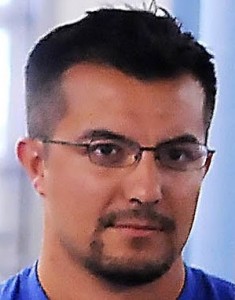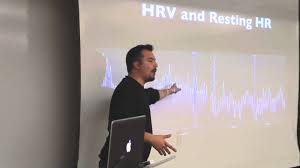
Carl Valle has spent over a decade with sports technology and has consulted with over a 100 companies since 2006 helping nearly every corner of performance ranging from testing to recovery.
Valle started his career with swimming and track and field for ten years before focusing on track and technology. His primary focus is Regeneration in sport, and lives in the metrowest area near Boston and escapes to Florida in the winter when possible.
JD: If you could, please give our readers a little background information about you, what your niche in the world of athletics is, accomplishments, how you got there, education, any products you have available and/or notable publications.

Accomplishments from graduation to now must be given to the athletes and fellow coaches. One of my favorite success stories was my friend who coached the high school I was at and lowered the 4×100 relay school record. He moved from North Carolina to get better at coaching by working with me, and now has helped my athletes outside of track become professional in other sports. One of my favorite experiences was helping a swimmer who lived on my street become an All-American, but credit must be given to parents and everyone involved. The more I coach the more I realize our job is to remove potential roadblocks, not drive the car to goals and dreams. Sending people to the Olympics is intellectually rewarding, but seeing athletes at an airport and get hugs, was something I never knew would mean so much.
A niche of mine is technology. I still I am a lousy programmer and spent 13 years in the public sector coaching high school and college for peanuts and it was worth every minute of it. I took huge risks by training unconventionally or even following a mentors program religiously, and that was a true learning experience of what works and what doesn’t. I have more cutting edge technology at my fingertips than any professional sports team in North America – as I have the luxury and burden of trying everything in advance when it’s in alpha mode. My job is to make it work, make it work faster, and make it work for coaches.
My blogs are all over the net, but my Kinetics Manual is perhaps my most useful summary of my work. It was a great project as my former assistant coach, that helped me publish the resource, is now at a major D1 Track Program and he single handedly helped make a summer internship into something everyone else can learn at any level. I will update it as it has a lot of needed changes and this will be publicly available again for anyone as a download on SpikesOnly.com
JD: Discuss with us the mistakes you see made by strength and conditioning coaches in the United States and around the world, and what you feel should be done differently/how to correct these issues.

I think many people don’t realize they make mistakes because athletes will find a way to succeed. Most coaches don’t remember what it was like to train hard over years and burn people out, from something that is basically a game (sport). If an athlete isn’t looking forward to playing the sport they love, something is wrong. I see three primary things that need to change soon. Most of my energy is making the process fun, rewarding, and educational. Fun is gone and likely the biggest mistake we make now as everyone things data and science solves all the problems. I have three points that I feel coaches must consider:
- Integrity – Making it in sports performance is a great opportunity professionally but no shortcuts with how one gets there should be made. Nobody is perfect, but we see a lot of smoke and mirrors and that is simply not acceptable. Sometimes it’s easier to make claims with voodoo science then say “I don’t know the guy is a freak” but now I just give an honest answer. I have trusted many people and let down athletes because information was simply a cover for great recruiting or bending rules.
- Injuries- At the end of the day we are responsible for athletes and are a primary route of care and protection. I should have put this at the top as every athlete has a body that can’t be seen as a vehicle of experimentation or pushed too far. Sport eventually ends and the rest of one’s life is too long to be greedy or careless. Injuries happen but we need to be better here.
- Innovation – Creativity and unconventional approaches are important to smoke out outdated ideas but sometimes it’s good to be vanilla. A careful balance between pushing the envelope and staying patient with the tried and true methods is what usually works best. Innovation is looking at what works and improving on it, not just bucking trends.
Clearly more than just the three paragraphs exist, but I see many coaches wanting to skip steps in career advancing and that’s why elite athletes are still making errors in training that you see in high school.
JD: What advice would you give a coach to improve knowledge in the lines of continuing education, meaning could you point our readers in a direction to find the scientific and practical information to improve the methods they use to improve performance?
CV: Continuing Education is to me the reason why I have had some breakthroughs. Experience matters of course, but honestly many coaches repeat the mistakes of the past because coaches of the past either don’t share or have been asked to share.
The key element with applied sciences is the right research being pushed and the right coaches being leaders in studies from the PHD world.
- Read the research directly, even my own writings should be taken with a grain of salt. Everything looks like it works when elite athletes are attached to the articles.
- Apply some of the right research and record the impact with your athletes. It’s ok to adopt other people’s information but always think about tailoring the suggestions. I have learned more in the last 5 years than the first because I looked at what I wrote down versus spinning my wheels.
- Visit and train with other coaches in training camps or during the offseason if possible. Seeing first hand or “witnessing” greatness can change your life. I visited nearly every major sprint coach in person in the 1990’s and know who is a genius and who is an amazing recruiter or talent poacher. Talk is cheap, visit and observe carefully how athletes are developing.
- Conferences and seminars can’t be ignored. Networking should be about learning synapse, not kissing people’s “rings” to get the better job. There is no better place than the job you are at in my opinion, so attend workshops that are about exchanges not working a head coach at a bar.
- Books are interesting, but most of the wrong people are reading the wrong stuff. We have people that are 24 and are at colleges looking at business leadership books and this is a problem. Sure money matters, but if your snatches and cleans look like drunk sailors playing around focus on coaching. It is true that just doing a good job isn’t enough, but if you stay hungry and work hard things typically work out.
20-30 Learning – Focus on pure sport science and coaching
30-40 Earning – A transition to career and personal leadership
40-50 Burning – A focus on living a life that is rewarding fits here
JD: If you could give a brief description of what our attendees can expect from you at the Seminar?
CV: My presentation is basically Regeneration Lab 2016. Many remember the website 10-12 years ago and it was a little raw and very observational versus structured. Now that sport science is a focal point in modern competition instead of an afterthought, expect serious case studies of what works and what doesn’t with recovery modalities. I have been very critical of the literature, as some techniques don’t work at all, some work better than first believed, and some just need better designs to replicate the approaches progressive teams are doing.
One example is the Martin Buchheit article on spa like thermotherapy and HRV indices between athletes who competed/trained hard and those that didn’t. The results were of course mixed but it was a great example that the situational context drives the recovery.
The presentation will be just a real display of athletes ranging from college soccer to elite track to understand that all of recovery stuff we see is likely not very usable and share the cream of the research that does help move the needle. It’s a big responsibility to set a standard beyond summarizing research that we all have, and you will see some amazing experiences I was lucky to be involved with. Also, every attendee will get a copy of the latest Kinetics Manual in print, something that is exclusive to the CVASPS community.
JD: Any closing thoughts Carl?
CV: The CVASPS is the best community in the US in my opinion for performance coaches. If you are young coach and want to get better and want a path to success – come. If you are a coach who feels like they are on an island and need chicken soup to a tired soul – come. If you are involved with high performance sport and tired of PowerPoints that scream infomercials and vague nonsense – come. The CVASPS is closing the hole BSMPG left after Art Horne went to the Atlanta Hawks and does it in a way that feels like family. Again, the CVASPS was something that I wanted to do for years and was one of the best experiences in my career.
We are hoping to provide the best possible content for strength coaches with each of our shows. If feel this could provide value for anyone else in the strength and conditioning field please feel free to share.
Enjoy the content? Then you should check out The Strength Coach Network!
You can find sensational content just like this in The Strength Coach Network. As a member of The Strength Coach Networks, you can access over 200 hours of the highest-level lecture content just like this one for 48 hours for only $1. Follow the link below to sign up and use the code CVASPS at check out to get a 48 hour trial for only $1. Check out The Strength Coach Network Here! https://strengthcoachnetwork.com/cvasps/
#StrengthCoach, #StrengthAndConditioningCoach, #Podcast, #LearningAtLunch, #TheSeminar, #SportsTraining, #PhysicalPreparation, #TheManual, #SportTraining, #SportPerformance, #HumanPerformance, #StrengthTraining, #SpeedTraining, #Training, #Coach, #Performance, #Sport, #HighPerformance, #VBT, #VelocityBasedTraining, #TriphasicTraining, #Plyometrics

